Michigan chestnut scouting report – June 10, 2020
Winter injury is evident around Michigan and potato leafhopper have arrived.

Warmer than average temperatures over the past couple weeks have helped put much of the state near normal degree day accumulation after starting the season 10-14 days behind average. For a more complete look at weather reports focusing on farmers’ interests, view the most recent agricultural weather forecast given by Michigan State University agricultural meteorologist Jeff Andresen. Be sure to download and refer to the new 2020 Michigan Chestnut Management Guide for nutrient management and pesticide related information.
As leaves expand, winter injury is becoming evident in a number of orchards, including in established orchards with large trees. Growers with mature tree damage are primarily reporting death of last year’s terminal growth, small trees are dying outright and some growers are seeing substantial damage by Ambrosia beetle, a sure sign of tree stress and collapse. In areas that received heavy rainfall after spreading fertilizer, fertilizer burn is showing up and results in browning leaf margins.
Potato leafhopper is being reported around the state and growers are encouraged to be actively scouting. Like many plants, chestnuts are sensitive to the saliva of potato leafhopper, which is injected by the insect while feeding. Damage to leaf tissue can cause reduced photosynthesis, which can impact production and quality and damage the tree. Most injury occurs on new tissue on shoot terminals with potato leafhopper feeding near the edges of the leaves using piercing-sucking mouthparts.
Symptoms of feeding appear as whitish dots arranged in triangular shapes near the edges. Heavily damaged leaves are cupped with necrotic and chlorotic edges and eventually fall from the tree. Don’t be fooled by boating, a phenomenon common in ‘Colossal’ in which leaves cup in response to hot weather. Potato leafhopper feeding damage causes cupping in combination with necrotic margins. Severely infested shoots produce small, bunched leaves with reduced photosynthetic capacity.
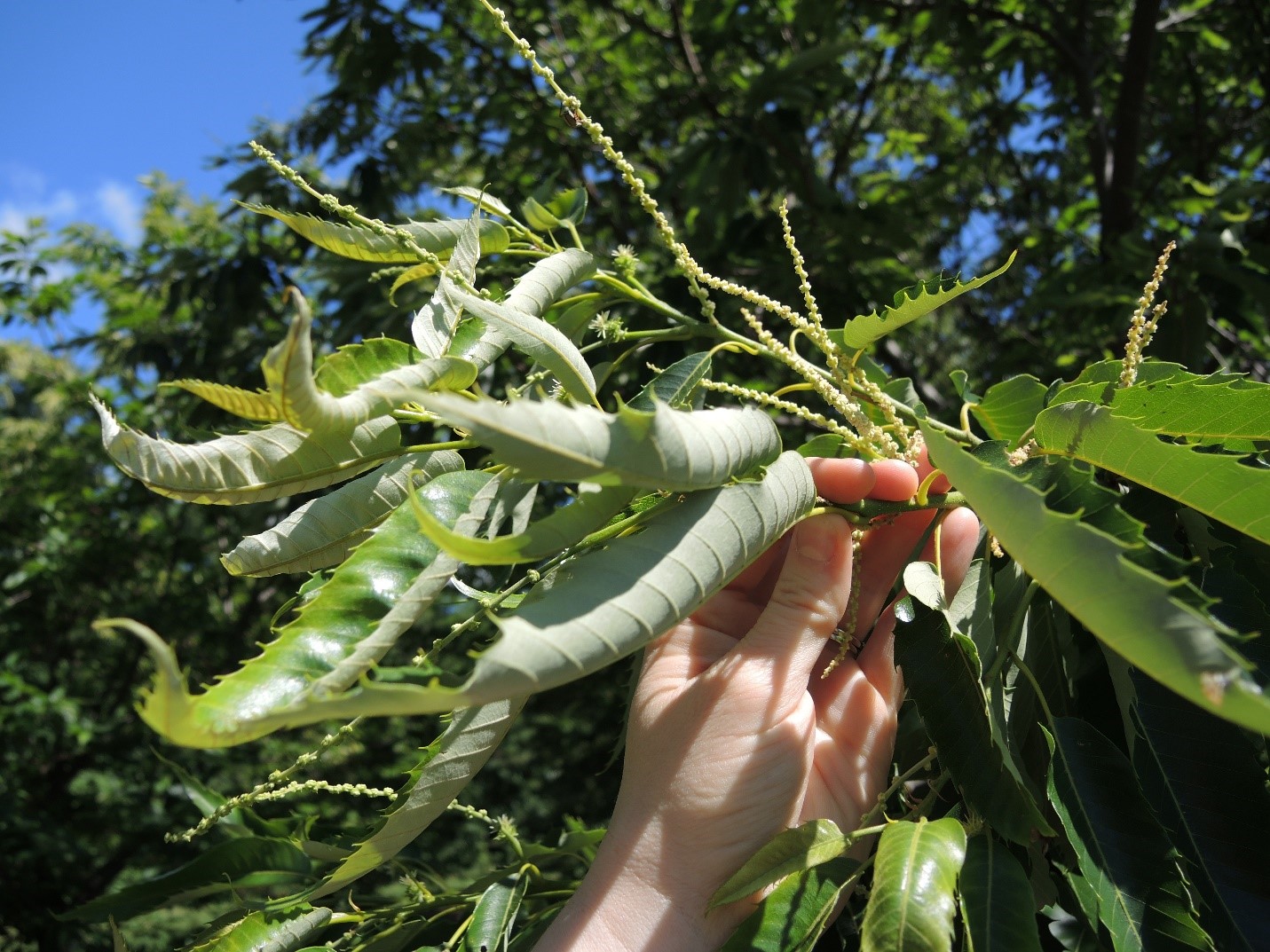
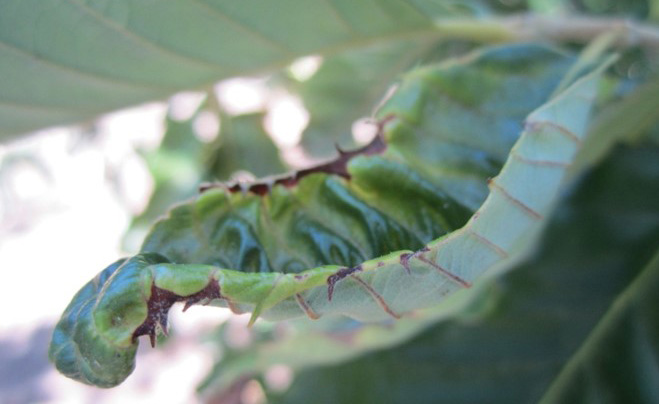
Adult leafhoppers are pale to bright green and about 1/8-inch long. Adults are easily noticeable, jumping, flying or running when agitated. The nymphs (immature leafhoppers) are pale green and have no wings but are very similar in form to the adults. Potato leafhoppers move in all directions when disturbed, unlike some leafhoppers that have a distinct pattern of movement. The potato leafhopper does not survive Michigan’s winter and reinfests each spring as adults migrate north on spring storm systems from the southeastern U.S.
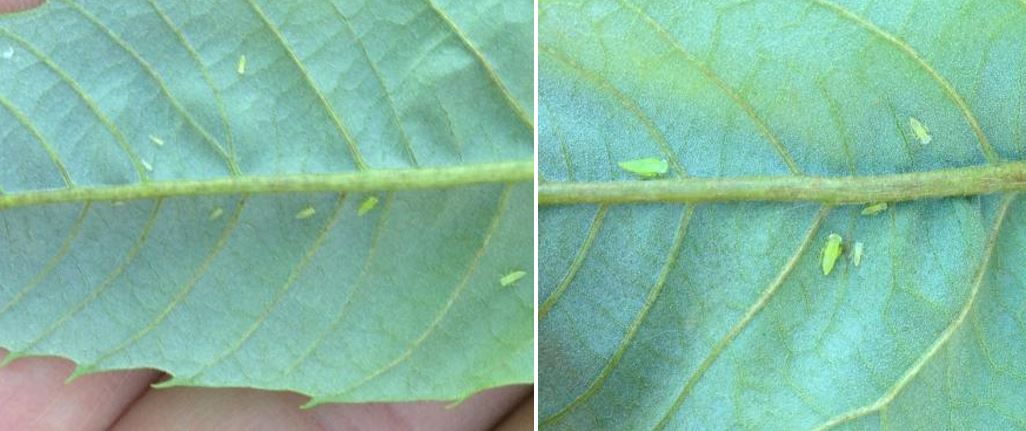
Scout weekly as soon as leaf tissue is present to ensure detection early and prevent injury. More frequent spot checks should be done following rain storms, which carry the first populations north. For every acre of orchard, select five trees to examine and inspect the leaves on three shoots per tree (a total of 15 shoots per acre). The easiest way to observe potato leafhoppers is by flipping the shoots or leaves over and looking for adults and nymphs on the underside of leaves. Pay special attention to succulent new leaves on the terminals of branches.
Most growers utilize foliar imidacloprid for control as it is highly effective, less toxic to beneficials and has longer residual activity. For more information on insecticides available for the treatment of potato leafhopper, refer to the current Michigan Chestnut Management Guide.
Rose chafer emergence should begin over the coming week for most of Michigan. Rose chafers are a generalist pest and affect many crops, particularly those found on or near sandy soils or grassy areas. The adult beetles feed heavily on foliage and blossom parts of numerous horticultural crops in Michigan and can cause significant damage to chestnut orchards. Rose chafer can be particularly damaging on young trees with limited leaf area. Rose chafer skeletonize the chestnut leaves but tend to consume larger pockets of tissue, with damage similar to caterpillar feeding rather than the fine lace-like leaf that results from Japanese beetle feeding.
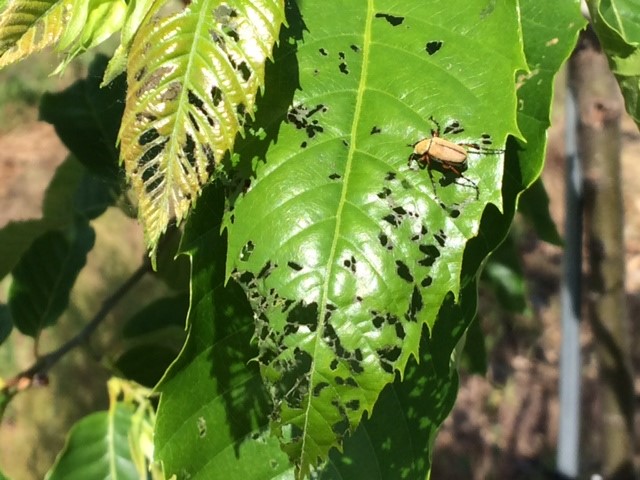
Rose chafers are often found in mating pairs and fly during daylight hours. Visual observation while walking a transect is the best method for locating them. Because of their aggregating behavior, they tend to be found in larger groups and are typically relatively easy to spot. There are no established treatment thresholds or data on how much damage a healthy chestnut tree can sustain from rose chafer, but consider that well-established and vigorous orchards will likely not require complete control. Younger orchards with limited leaf area will need to be managed more aggressively.
Rose chafers are a light tan beetle with a darker brown head, long legs and are about 12 millimeters long. There is one generation per year. Adults emerge from the ground during late May or June and live for three to four weeks. Females lay groups of eggs just below the surface in grassy areas of sandy, well-drained soils. The larvae (grubs) spend the winter underground, move up in the soil to feed on grass roots and then pupate in the spring. A few weeks later, they emerge from the soil and disperse by flight. Male beetles are attracted to females and congregate on plants to mate and feed. For more information on insecticides available for the treatment of rose chafer, refer to the current Michigan Chestnut Management Guide.
Chestnut trees are also susceptible to feeding damage from a number of spider mite species including European red mite and twospotted spider mites. Affected leaves appear mottled, stippled or bronzed and become brittle leading to early defoliation and reduced photosynthetic activity. Reduced photosynthesis can lead to reduced nut size and return crop load in subsequent years as well as increased sensitivity to winter injury. At this time, no treatment thresholds are established for mites in chestnut, but evidence from crops like cherry indicate that some level of feeding is likely tolerable and that higher populations can be tolerated as the season progresses through summer. European red mite appears to be the more prevalent mite species for chestnut producers, but keep an eye out for twospotted spider mites as well.
European red mites overwinter as eggs in bark crevices and bud scales. Eggs are small spheres, about the size of the head of a pin with a single stipe or hair that protrudes from the top (this is not always visible). Eggs can be viewed with a hand lens or the naked eye once you have established what you are looking for. Scout for overwintering eggs and early nymph activity in the spring to assess population levels in the coming season. As temperatures warm, overwintering eggs hatch and nymphs move onto the emerging leaves and start feeding.
Adult European red mites are red and have hairs that give them a spikey appearance. Adult and nymph feeding occurs primarily on the upper surface of the leaves. This first generation is the slowest of the season and typically takes a full three weeks to develop and reproduce. This slow development is due to the direct link between temperature and mite development. Summer generations, favored by the hot and dry weather, are able to complete their life cycles much faster with as little as 10 days between generations under ideal conditions.
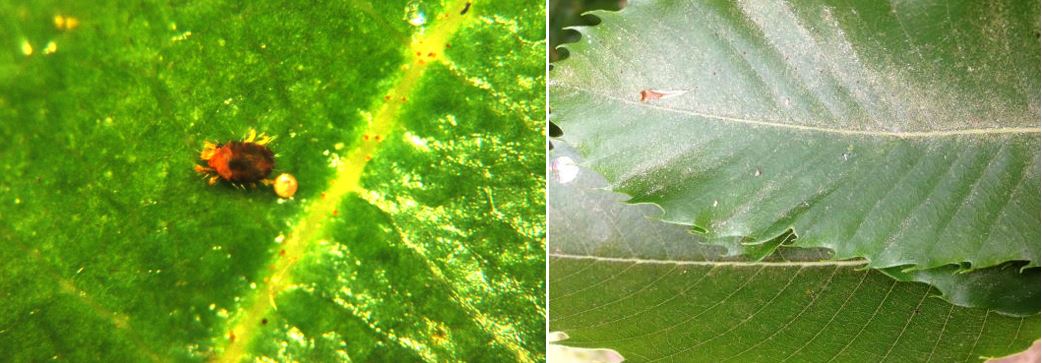
Also, look for twospotted spider mites when scouting. Twospotted spider mites have two distinct spots located on the front half of the body. Males are much smaller than females and have a distinctly pointed abdomen. Twospotted spider mite eggs are spherical and translucent and are often found along leaf veins. Twospotted spider mite nymphs and adults can be a variety of colors depending on the time of the year and stage of development. Potential colors include orange, brown, pale yellow or green, so use the spots as the key identification characteristic.
Twospotted spider mites overwinter as adults around the base of trees in the duff. As the weed or grass cover under the trees dries out, twospotted spider mites start to move back up into the canopy in higher numbers from tight cluster through harvest. Like European red mites, twospotted spider mites damage the tree by feeding on the underside of the foliage and give the leaves a dirty appearance when populations become high and leaf surfaces are coated in eggs, discarded exoskeletons and webbing.

While scouting, remember that not all mites are bad. Consider documenting the levels of predacious mites in your orchard. If healthy populations of mite predators exist, they will continue to feed on plant parasitic eggs and nymphs and can be an effective component of your mite management program. The three most important predaceous mites are Amblyseius fallacis (Phytoseiidae), Agistemus fleschneri (Stigmaeidae) and Zetzellia mali (Stigmaeidae). Predaceous mites are typically translucent, they can be seen with a hand lens and typically move very quickly across leaf surfaces compared to European red mites and twospotted spider mites. For information in miticides registered for chestnut in Michigan, refer to miticide table in the Michigan Chestnut Management Guide.
Lastly, growers with small trees are reporting damage by a unidentified species of ambrosia beetle, likely the black stem borer (Xylosandrus germanus), which has possibly been attracted by winter injury to young trees. Black stem borer is known to infest stressed trees in Michigan, including all commercial tree fruit species and many common forest tree species including chestnuts, oaks, elms, black cherry, pawpaw, beech, dogwood and black walnut.
Injured or stressed trees produce ethanol, which attracts ambrosia beetle. Ambrosia beetles do not typically attack well-established older trees or trees that are healthy. For more information on ambrosia beetle, refer to the MSU Extension article, “Black stem borer: An opportunistic pest of young fruit trees under stress.”
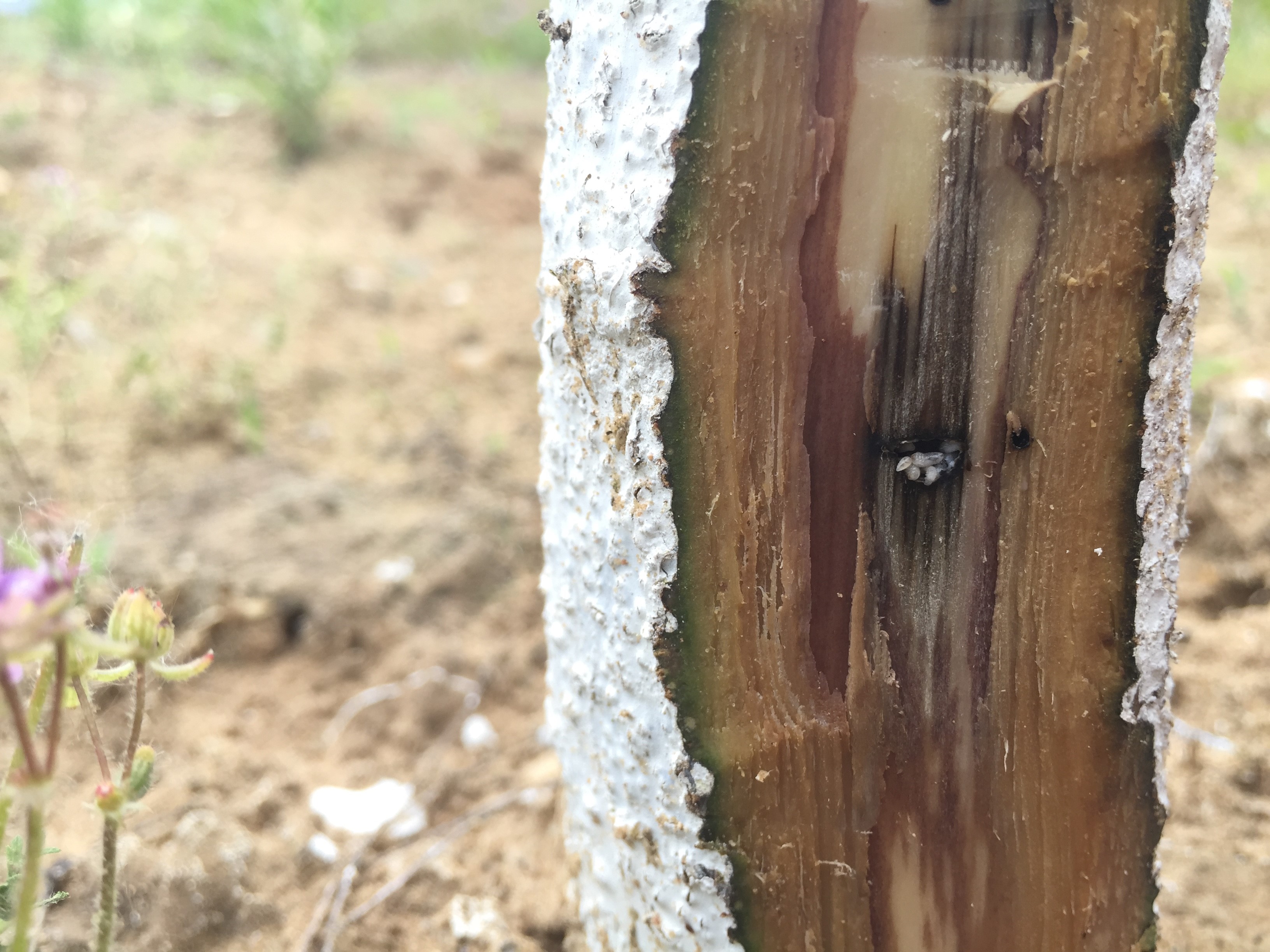
Stay in touch!
Check out the MSU Extension Chestnut website. Follow us on Facebook at Michigan State University Chestnut News. Sign up to receive the Fruit and Nut Digest. Consider membership in the Midwest Chestnut Producers Council and join us for the Chestnut Lunchtime Webinar Series (taking place now)!
This work is supported by Project GREEEN and the Crop Protection and Pest Management Program 2017-70006-27175 from the USDA National Institute of Food and Agriculture. Any opinions, findings, conclusions or recommendations expressed in this publication are those of the author(s) and do not necessarily reflect the view of the U.S. Department of Agriculture.
This work also supported by the Rogers Reserve Endowment.



 Print
Print Email
Email



